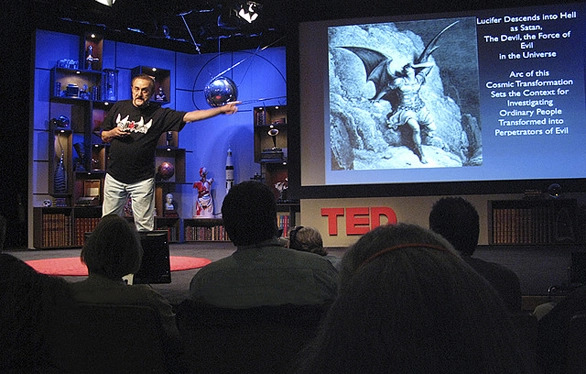10 Psychology Experiments in Real Life

Over the years, many researchers and psychologists have conducted many different experiments to test hypotheses and theories. The subject of psychology is a rather broad field with various specializations that study the different types of psychology. These studies have helped to increase the pool of knowledge on the topic of psychology. While most experiments were ethically conducted with accordance to guidelines, some of them pushed the limits of ethics which resulted in controversy but also opened researchers to new knowledge. In this article, I will be sharing with you some of the psychology experiments that have been conducted over the years.
1. Beneficial Brainwashing Experiment
This experiment was conducted by Dr. Donald E. Cameron in the 1950s to 1960s. The experiment was carried out by forcing patients to listen to audio messages on a loop over long periods of time to possibly allow the psych to receive those messages directly. This experiment was considered to be unethical as patients were used as test subjects, but fortunately was shut down later.
2. The Stanford Prison Study
This study was conducted by Philip Zimbardo in 1971 to study the assumption of roles in a contrived situation. Participants took on roles as inmates or guards and ran a prison for two weeks. Despite being instructed not to harm any inmates during the study, the prison guards became very verbally abusive towards the inmates and many of the prisoners became started to submit to those in authority roles. This caused the study to be cancelled halfway as it was affecting some of the participants. This study shows that if the conditions are appropriate, people tend to conform to certain roles which leads psychologists to believe that human behaviour can be situational.
3. The Blue-Eyed/Brown-Eyed Experiment
This experiment was conducted by Jane Elliot in 1968. Two groups of her students were separated based on their eye colours, blue and brown respectively. She assigned superiority to the blue-eyed group by giving them preferential treatment and would exemplify the differences between the two groups by singling out students. This resulted in the blue-eyed group displaying signs and traits of superiority while the brown-eyed group displayed signs and traits of inferiority. She then reversed their roles and found that although similar results were observed, they were not as intense. This study showed that discrimination can begin at a young age and young students must be educated properly.
4. The Monster Study
This study was conducted by Wendell Johnson in 1939 that demonstrated the importance of positive reinforcement for the development of an individual. Johnson selected 22 orphans and split them up in two groups of which both groups consisted of orphans who stutter or had some form of speech impediment. One group was subjected to negative reinforcement which lead to their speech impediment becoming worse. Those who did not have speech impediment also started to develop symptoms. The other group was treated the exact opposite which resulted in positivity such as higher fluency and having better abilities in holding conversations.
5. The Milgram Experiment
This experiment was conducted by Stanley Milgram in 1961. It was designed to gauge an individual’s willingness to obey people of authority when instructed to carry out tasks that conflicts with their morality. An actor was used to portray a student to fake being shocked while participants took on the role of an educator. Participants were instructed to administer shocks when the “student” got an answer wrong and were further instructed to increase the voltage. Despite the conflict with their morality, many participants did as they were told when an authority instructed them to. This experiment shows that humans are conditioned to obey authority and rarely choose to go with their morals instead.
6. The Asch Conformity Test
This test was conducted by Dr. Solomon Asch in 1951. This study was designed to evaluate a person’s likelihood to conform to a standard when there is pressure to do so. A group of participants were shown pictures with lines of various lengths and were then asked which line was the longest? However, in each group there was only one person that was a true participant. The others were scripted actors being instructed to give the wrong answer. This experiment proves to us that many people experience a need to conform to a standard during group situations and it showed that people often care more about being the same as others.
7. The Marshmallow Experiment
This experiment was conducted by Walter Mischel in 1972. This study was designed to prove whether delayed gratification can be an indicator of future success. In this experiment, children were taken into a room where a marshmallow was placed in front of them on a table. The experimenter then informed them that they would receive a second marshmallow if the first one was still on the table after they returned in 15 minutes. In follow-up studies, Mischel found that those who delay gratification were significantly more competent and did better in school. Although this study may appear to be simple, the findings show that certain differences in individual traits can predict success.
8. The Carlsberg Social Experiment
This experiment was conducted to test how courageous people can be in an unfamiliar situation. In this experiment, a cinema was filled with bikers, leaving only two empty seats right in the centre. The people who were brave enough to take their seats received applause from the bikers alongside two complimentary Carlsberg beers while the people who felt intimidated, chose to leave the cinema instead. This experiment was used to prove of how humans are habitual creatures that experience a sense of fear when going into the unknown.
9. The Robbers Cave Experiment
This experiment was conducted by Muzafer and Carolyn Sherif in 1954, studying conflict in groups. Two separate groups of boys were assigned to different summer camp facilities to bond as a group. When the two groups first made contact, they showed definite signs of prejudice and hostility toward each other despite only having a short period of time to develop their social group. Further rivalry was created through competition to potentially create more conflict, which resulted in hostility and refusal to associate with the other group. However, this conflict was eventually resolved through team bonding exercises that forced the two groups to work together which proved that conflict can be resolved and prejudice can be overcome through cooperation.
10. The Experiment of the Ape and the Child
This experiment was conducted by Winthrop Kellogg in 1931 to see if an ape could be taught how to be civilised like man. The ape and Kellogg’s child became friends quickly. The ape displayed more intelligence and the Kelloggs realized that their child’s speech cognition was suffering and that the child needed to spend time around humans more. This experiment brings up an interesting perspective of how humans find it easier to emulate animals than humans.
Summary
Although these experiments and studies consisted of both ethical and unethical methods, it cannot be denied that the findings have helped the study of psychology to grow further to where we are today. These are just some of the many experiments that have been conducted in the past. I hope this article has inspired some interest in the study of psychology. If you would like to read more psychology-related articles, feel free to visit us at https://psych2go.net/.




Responses